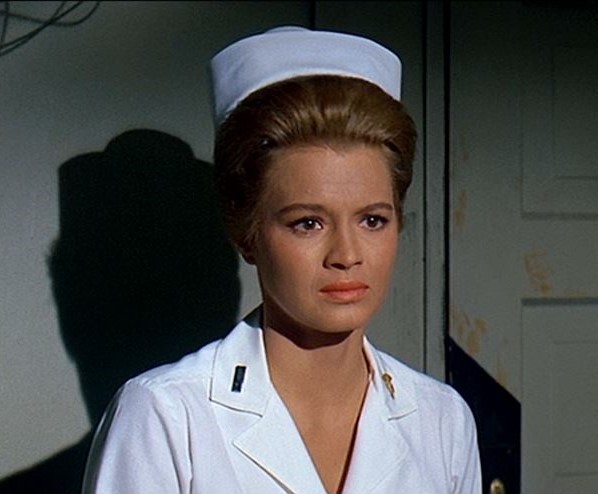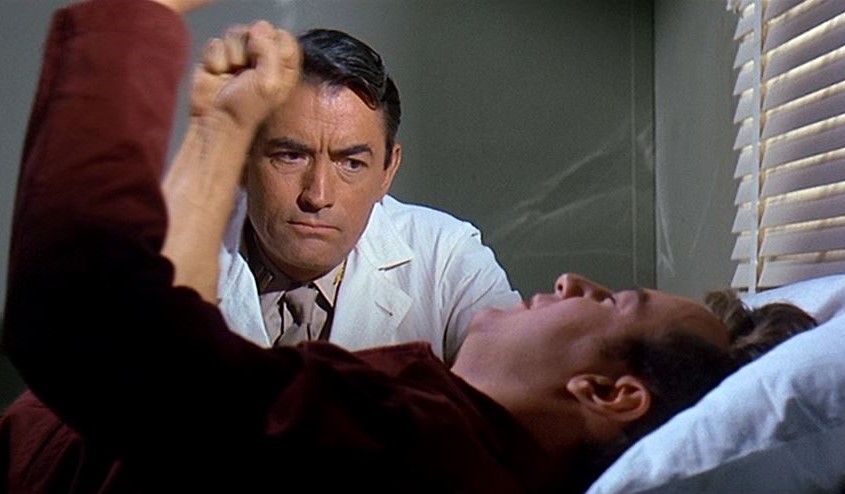Blog 03/29/2021 - Women in the Military Trifecta Movie Review
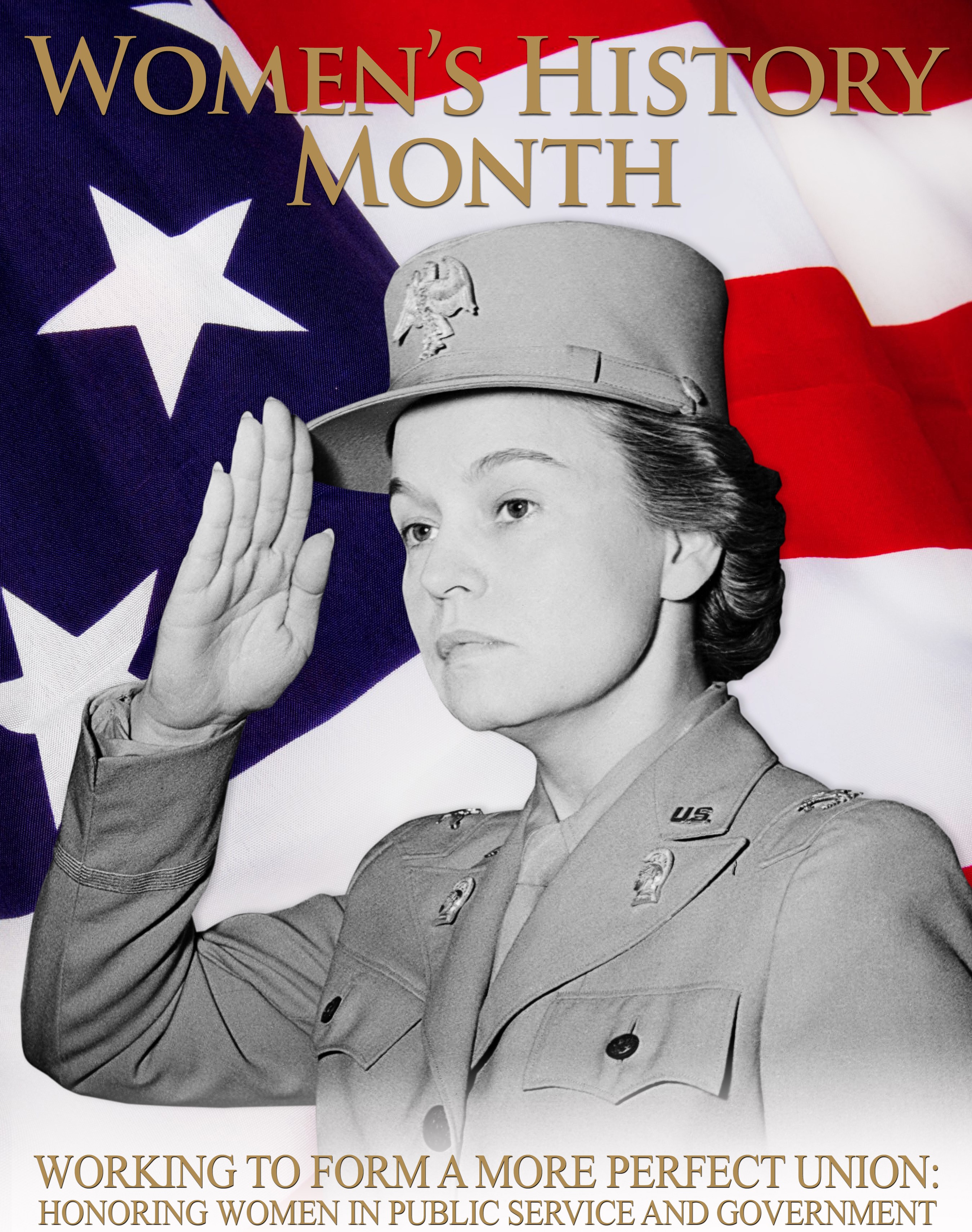
MHT would like to honor Women Serving in the Military during Women’s History Month. MHT reviews three movies that demonstrate the important roles that women engaged in WWII as we see some Women Army Corps recruits attempt to become officers, some Marines & an Aussie Air Force Officer in the war plus an Army Nurse helping those mentally wounded.
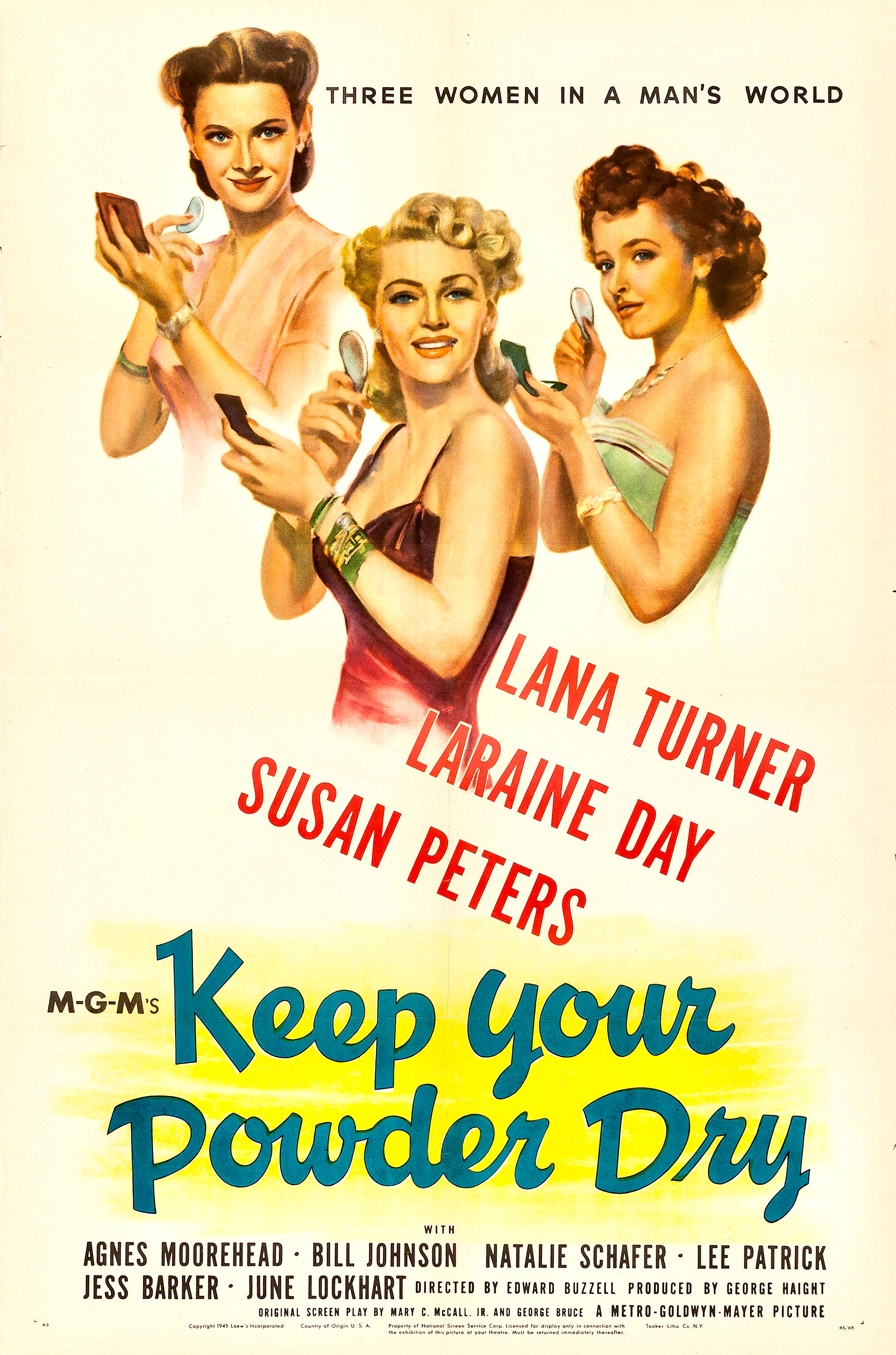
Our first film is one of the initial movies about the Women’s Army Corps. President Franklin D. Roosevelt signed the legislation on July 1, 1943, which changed the name of the Women’s Auxiliary Army Corps to the Women's Army Corps (WAC) and made it part of the US Army. This gave women all of the rank, privileges, and benefits of their male counterparts. In a play on the adage “Trust in God and Keep Your Powder Dry” where here the powder can be both gun and face powder. Keep Your Powder Dry” (1945) focuses on three ladies from separate lives who meet in WAC training and must bond despite their initial differences.
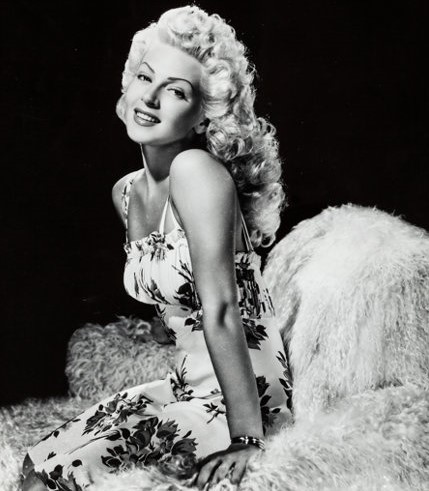
Lana Turner is the huge box-office draw and one of WWII’s leading pin-ups. She plays Valerie Park, a playgirl socialite who wants the money in her trust fund and is convinced the way to show her bankers that she is reliable and responsible and has changed her profligate ways is to become a WAC. She has a host of hanger-on’s none more so than Natalie Schafer who keeps tabs on Turner’s dwindling funds (Harriet Corwin who will play another socialite as Mrs. Lovie Howell on “Gilligan's Island!”) The $639,000 held by the trust would equate to over $9,000,000 in today’s dollars. She applies herself in WAC training but still has that rakish tongue of the sexually liberated woman unusual for the 1940’s:
WAC Sergeant (asking recruits to identify a plane silhouette): Good going, Parks. You know your planes. Val Parks: I know my pilots!
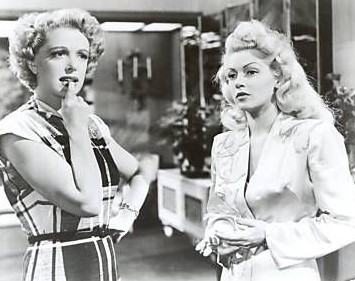
As Turner comes off the train in furs and high-heels in Des Moines site of the WAC training she is immediately eyed by Laraine Day (Leigh Rand) who father is a US Army General, who raised her on numerous military bases as an Army brat. She considers herself better than the others because of her military knowledge and background. She appears jealous of Lana Turner and their clash of personalities is the driving force of the film.
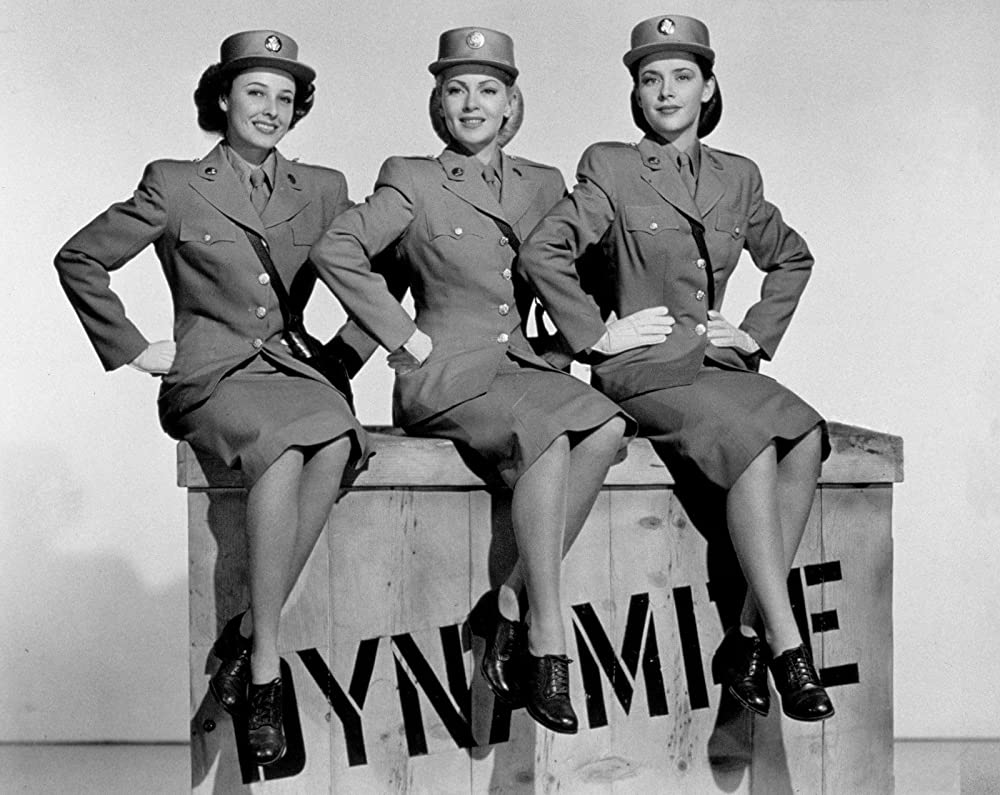
The third lady is new bride Ann Darrison (played by Susan Peters as this would be her last movie before being shot and paralyzed in a hunting accident and dying at 31) from a small town who is married to an Army Captain already deployed overseas. Other actresses in the film are Agnes Moorehead who plays the WAC Commandant LTC Spottiswoode (and then mother-witch Endora on “Bewitched”) and another platoon member is June Lockhart as Sarah Swanson (who goes onto “Lassie,” ”Lost in Space” and “Petticoat Junction.”)
Backgrounds for the film were shot at the WAC training centers in Des Moines, Iowa and Fort Oglethorpe. Sgt Art Moore of the US Army Signal Corps Photographic Unit instructed 50 dancing girl extras for the marching drill scenes featured in the film.
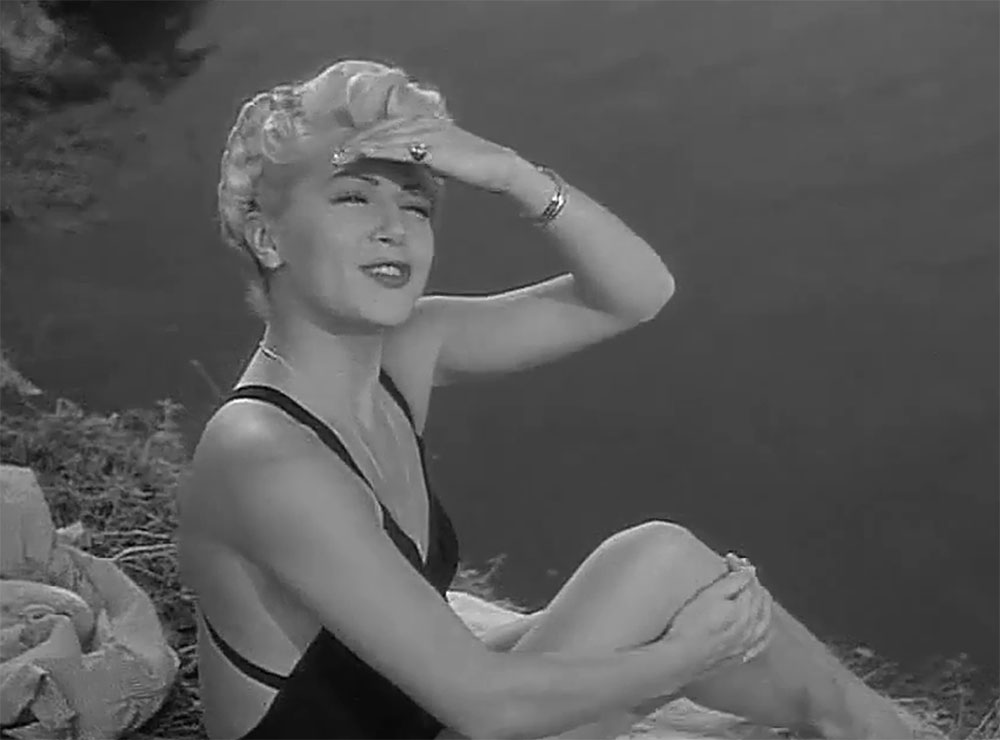
The film had to get the ladies lounging in swimsuits and they have a chance to swim after a hike. They are about to change out of their wet suits in the bushes when all of the bushes stand up full of male soldiers in a camouflage drill.
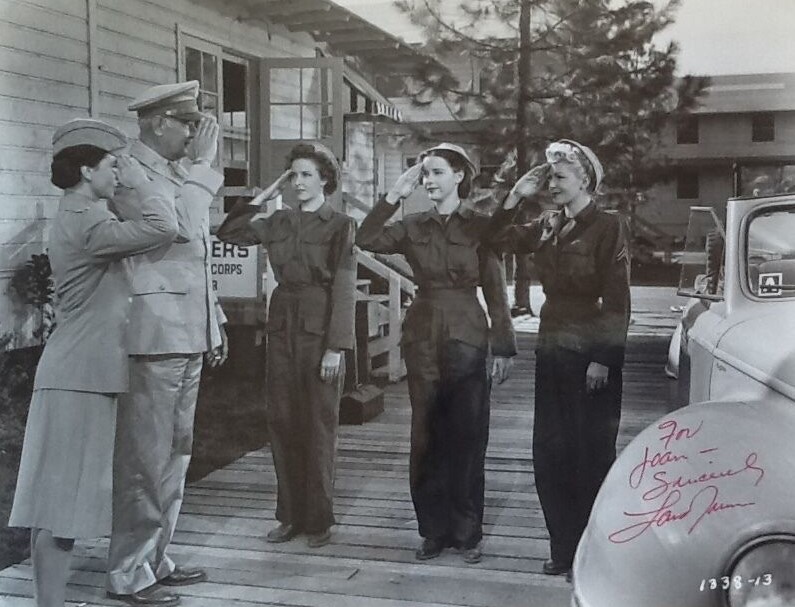
Peters attempts to remediate the tensions between Turner and Day during training, until all three become a working team in the Motor Pool. They show their teamwork and ability by getting the General’s car running, it is a rare 1942 Chrysler Windsor convertible coupe of only 574 produced. Tune in to the movie to find out who of the three are accepted into the Officer's Candidate School, which survive the rigors to become officers, does Turner get the money and quit the WAC, is Day able to be less domineering and work with the other ladies and does Peters serve with her husband?
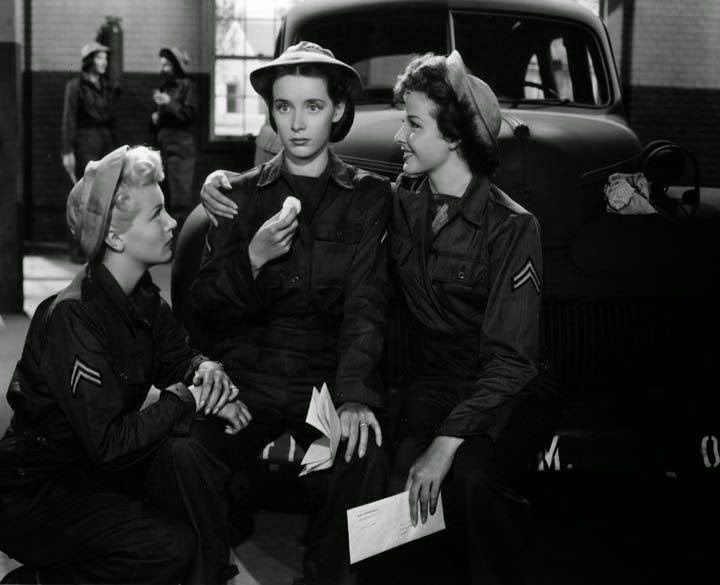
MHT gives this 3½ Stars, the extra ½ for the vehicle the WACs take from the all-female Motor Pool is the humorously named “Wolf Trap!”
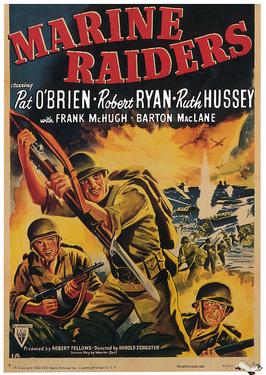
“Marine Raiders” (1944) is an RKO war film depicting the 1st Marine Raider and 1st Marine Parachute Battalions on Guadalcanal, Rest & Recreation (R&R) in Australia, retraining in Camp Elliott (that would become Naval Air Station Miramar as “Fightertown, USA” and then became a Marine Corps Air Station) and a fictional attack at Cape Torokina in a fictional assault that a map identifies as Bougainville in 1943. According to a Variety review of this film in the 21 June 1944 edition, the War Department provided footage of the naval attack on Guadalcanal and the training of Marine recruits at Camp Elliott, California.
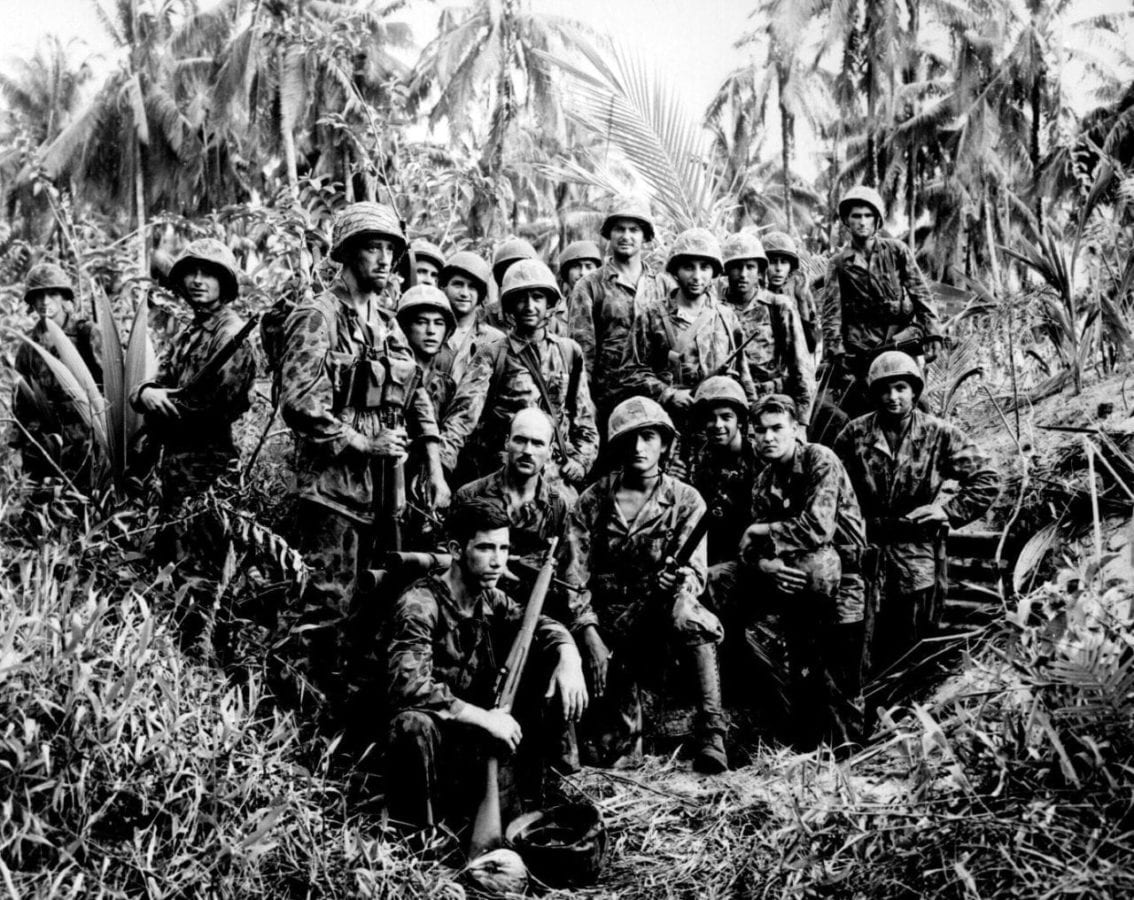
The film opens with the Guadalcanal Campaign and the Battle of Edson's Ridge in 1942. Major Steve Lockhart, USMC (played by the always excellent Pat O'Brien), commander of a Marine Raider battalion and Captain Dan Craig, USMC (Robert Ryan) of the Paramarines are facing an Imperial Japanese Army (IJA) assault to recapture Henderson Field.
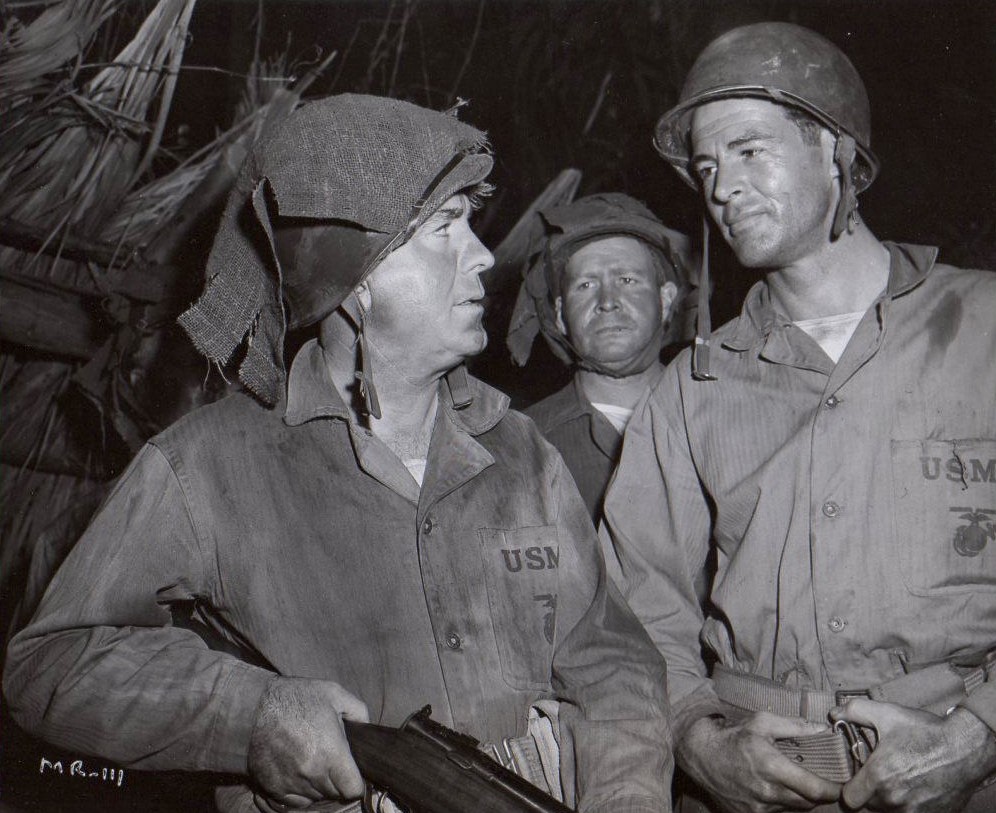
When Ryan discovers the body of one of his lieutenants who had been captured, tortured and executed by the IJA, he goes on a one-man killing spree. His rampage of revenge through the jungle with an interesting and rare weapon, the Reising M50 .45 ACP submachine gun (It realistically jams, the Reising's close tolerance and delicate magazine proved unreliable in the sand and mud of the Solomon’s jungles—unless kept scrupulously clean.
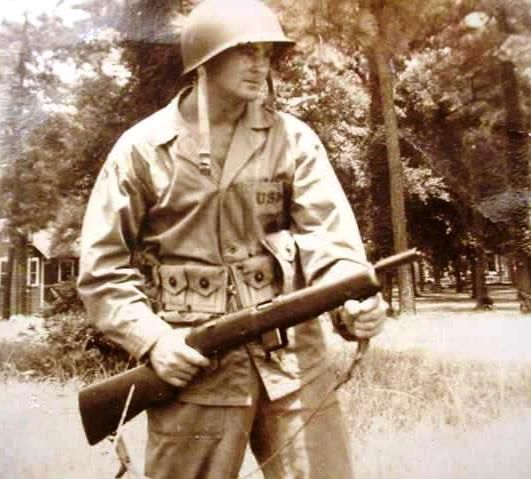
This gun was used (because the more familiar Thompsons (Tommy guns) were unavailable) and quickly became despised by the Marine Raiders and ParaMarines, and LtCol Merritt A. Edson, the actual Commander of the 1st Raider Battalion, ordered that the Reisings be flung into Guadalcanal's crocodile infested Lunga River, as his troops resorted to the old reliable bolt-action Springfield rifles) and his trusty M1911 .45 pistol the only thing keeping him from being relieved of his command was his leadership in defeating the five IJA assaults during a night of hard fighting.
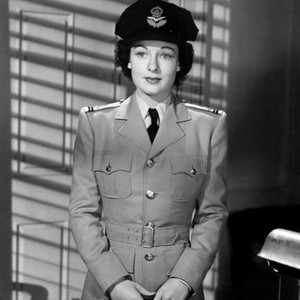
The battle-weary Marine units leave the “Canal” for R&R in Australia. The troubled Ryan meets a strong, and sympathetic Flight Officer (Lieutenant), Ellen Foster (Ruth Hussey) of the Women's Auxiliary Australian Air Force (WAAAF) who has two brothers fighting German General Rommel’s Afrika Korps in North Africa. The WAAAF was founded in 1941 to free up men for overseas service and she is an important part of Australia’s war effort. Hussey brings Ryan out of his downward spiral and the two fall in love.
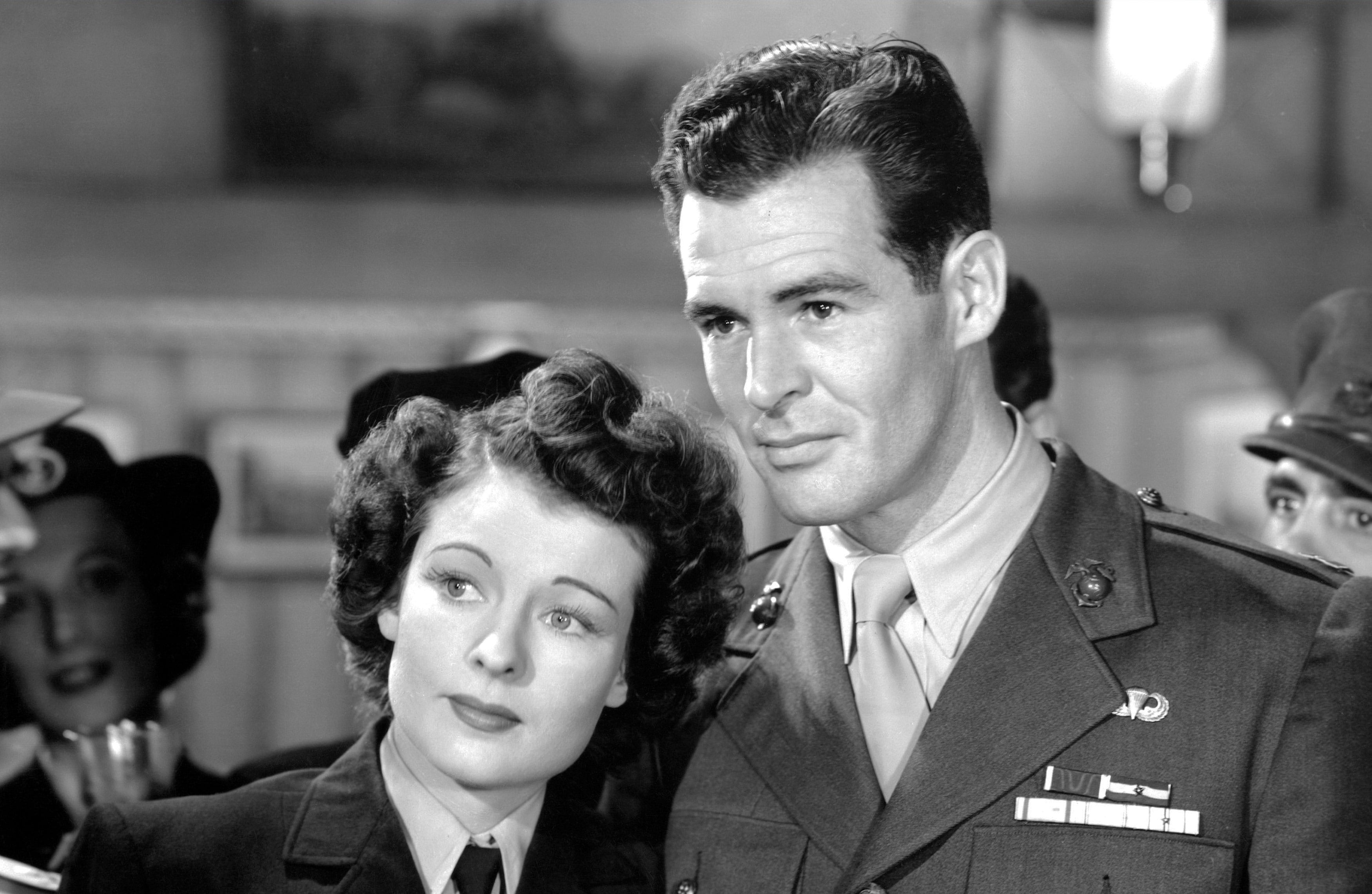
They plan to be married but Ryan is wounded during an IJA air attack delaying the nuptials. When the senior O’Brien visits Ryan in the hospital and finds out that Ryan wishes to marry Hussey, he thinks Ryan is mentally confused and transfers him immediately onto the troop transport ship back to San Diego.
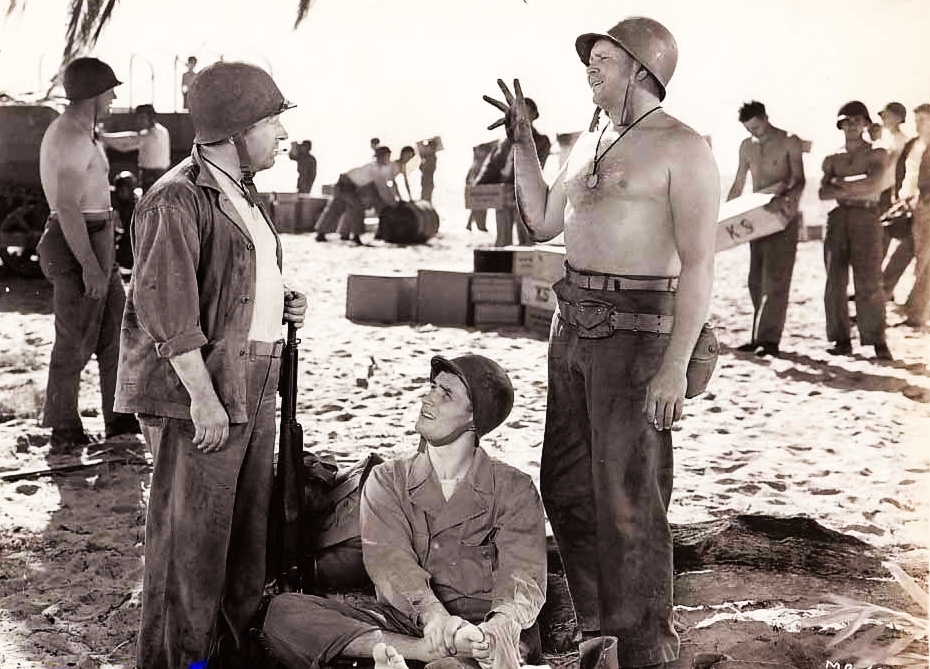
The movie’s comic relief is provided by Sgt Louis Leary (Frank McHugh) as the head cook for the Marines and 1stSgt Maguire (Barton MacLane) who is always complaining about the food with the running gag line “more Pepper.” Back in San Diego at the Marine Corps Recruit Depot the two pre-war Marines are incredulous at how young the male recruits are, McHugh asks derisively “Well what won’t they be taking into the Marine Corps next?” when a platoon of Women Marines marches around them from behind.
The film had Capt Clay Boyd, USMC as the technical advisor. Boyd, the son of a WWI Marine, was a former enlisted Marine commissioned in 1941 who was a platoon commander with the 1st Raider Battalion on Guadalcanal and twice reconnoitered New Georgia prior to the invasion where he was a company commander. So, the night battle sequences are well done.
Robert Ryan enlisted in the Marines after this film was made and spent most of the war as a Drill Instructor at Camp Pendleton, CA before being discharged in November of 1945.

The film’s second female lead was pin-up fave Martha Vickers as girl back home Sally Parker. You will have to see the movie to see how the battles for love and war play out.
MHT gives this 3½ Stars taking a ½ away for showing an actual combat jump by Marine paratroopers that didn’t happen as the Paramarines were disbanded into the newly formed 4th & 5th Marine Divisions.
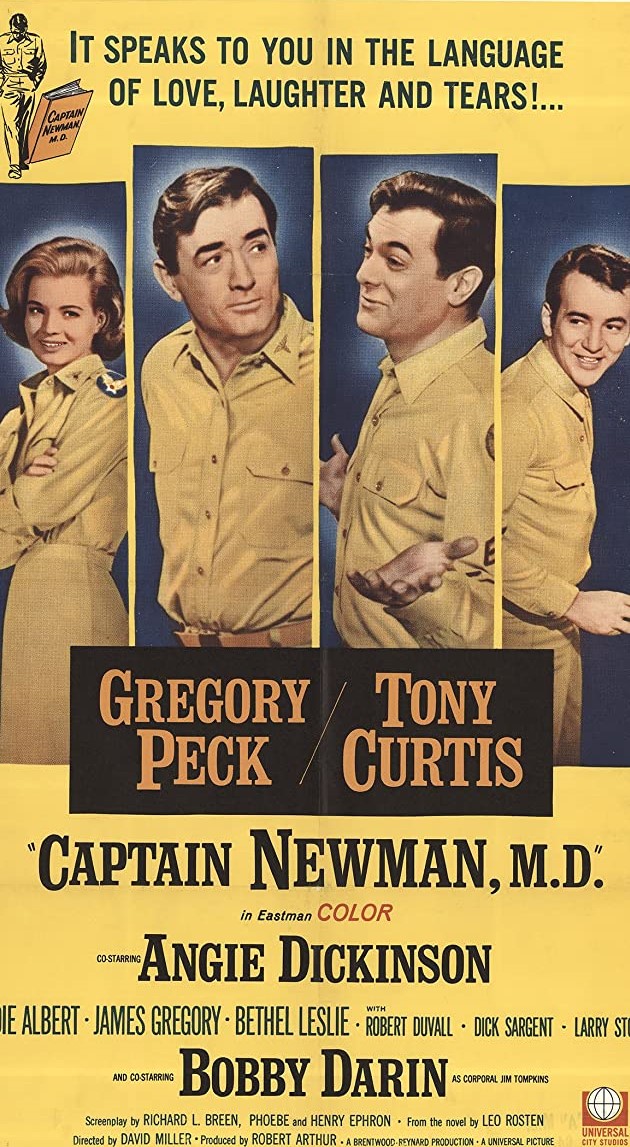
Our final film is “Captain Newman, M.D.” (1963) that takes place in 1944, at Colfax Air Force Base Hospital in Arizona. Capt Joe Newman, M.D. (Gregory Peck) is head of the psychiatric ward. The number of US Army Air Force personnel has both increased in number and need for advanced psychiatric assistance. Peck feels his ward is short staffed and he does whatever is necessary to get additional staff from within the hospital.
When Corporal Jake Leibowitz (Tony Curtis) reports in as an orderly in another ward, Newman manages to abscond with the reluctant Curtis who adds levity and energy into the ward’s day-to-day operations of the ward. Peck also coerces the beautiful nurse, Lieutenant Francie Corum (Angie Dickinson) to transfer into the ward. Dickinson is far more than the love interest for Peck but
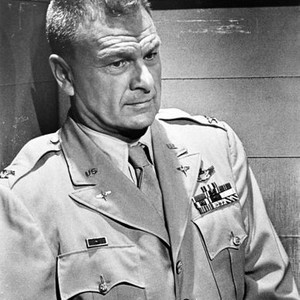
The three highlighted cases in the ward give three actors a chance to expand their craft. The first is Colonel Norville Bliss (Eddie Albert) who sent much of his squadron’s pilots to their death and has retreated into the fascinating Mr. Future personality. Albert’s break with reality takes him far beyond his familiar TV “Green Acres” character. Albert is believable about combat as he was awarded the Bronze Star with Combat "V" for his actions during the invasion of Tarawa in November 1943, when he led a US Coast Guard landing craft to rescue 47 Marines who were stranded offshore (and supervising the rescue of 30 others) while under heavy enemy machine-gun fire.
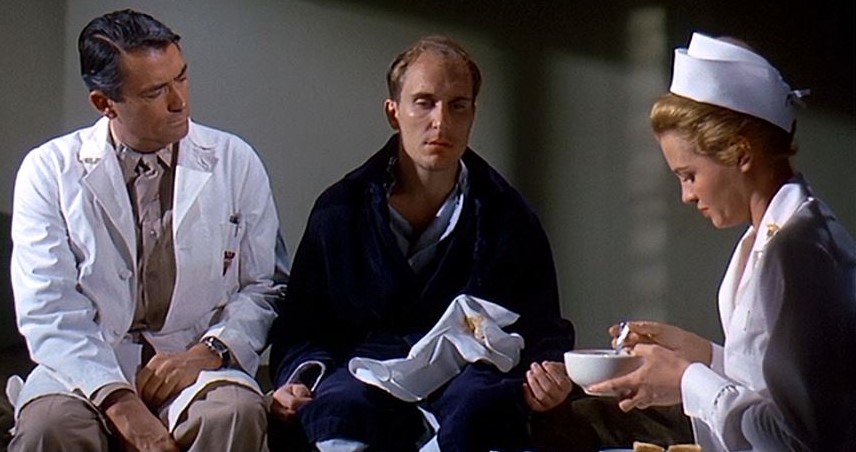
Captain Paul Winston (a young Robert Duvall) shot down behind enemy lines has hid in a basement for 13-months. His VIP family and wife want him cured but Duvall’s pain and shame fill the screen.
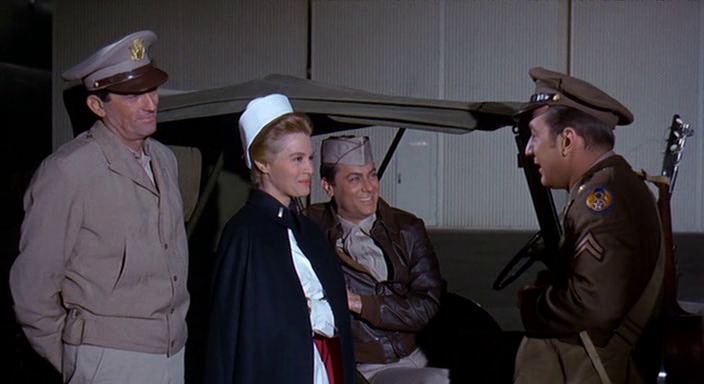
The last is Corporal “Little Jim” Tompkins, (Bobby Darin) who did 34 missions with the 8th Air Force until he cracks up when his buddy “Big Jim” is lost in the B-17 crash and explosion. Darin earned a Best Actor in a Supporting Role Academy Award Nomination as his gunner shows excessive alcohol consumption, insomnia and bravado overshadowing his emotional issues. He is magnificent when he has the 'flak juice' treatment a technique called narcosynthesis in which a medication, such as sodium pentothal or sodium amytal, is used to induce hypnosis. These short-acting barbiturates cause disinhibition which helps the soldier participate in psychotherapy. The therapist works with the soldier to recall battle traumas, and thereby attempts to treat or reduce the effects of psychological traumas associated with battle.
While working for the War Department in 1945, director John Huston made the documentary film 'Let There Be Light' that shows real soldiers undergoing the 'flak juice' treatment with real military doctors. Due to the potentially demoralizing effect the film might have on post-war recruitment, it was banned by the Army and all prints were confiscated. The Secretary of the Army didn’t lift the ban until the 1980s. As a federal government DoD production, it is in the public domain and can be found on the internet for free viewing.
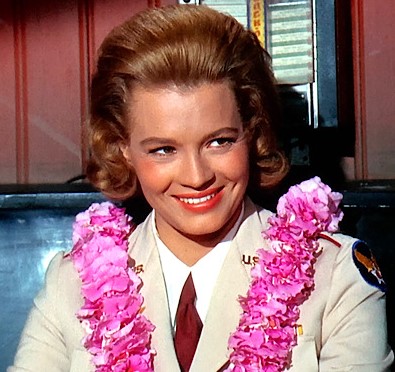
Captain Newman M.D. was also a 1972 TV pilot with a plot much like M*A*S*H (1970), in that it is both dramatic and a comedy about a mental ward. Joan Van Ark plays the nurse and Jim Hutton the Doctor. Robert Duvall appears in both films, and Mike Farrell, who plays a mental patient in Peck’s Ward 7, starred in the M*A*S*H TV show.
MHT gives it 4 Stars for all the strong performances in showing the mental battle damage and bringing Post-Traumatic Stress Disorder (PTSD) to the forefront as a possible result of combat. All three movies paint a positive picture of women serving in the military that paved the way for an expansion of responsibilities and specialties.

